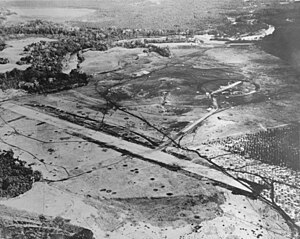
The Guadalcanal campaign, also known as the Battle of Guadalcanal and codenamed Operation Watchtower by American forces, was a military campaign fought between 7 August 1942 and 9 February 1943 on and around the island of Guadalcanal in the Pacific theater of World War II. It was the first major land offensive by Allied forces against the Empire of Japan.

Guadalcanal is the principal island in Guadalcanal Province of Solomon Islands, located in the south-western Pacific, northeast of Australia. It is the largest island in the Solomon Islands by area, and the second by population. The island is mainly covered in dense tropical rainforest and has a mountainous hinterland.

The naval Battle of the Eastern Solomons took place on 24–25 August 1942, and was the third carrier battle of the Pacific campaign of World War II and the second major engagement fought between the United States Navy and the Imperial Japanese Navy during the Guadalcanal campaign. As at the Battle of the Coral Sea and the Battle of Midway, the ships of the two adversaries were never within sight of each other. Instead, all attacks were carried out by carrier-based or land-based aircraft.

The Battle of Rennell Island took place on 29–30 January 1943. It was the last major naval engagement between the United States Navy and the Imperial Japanese Navy during the Guadalcanal Campaign of World War II. It occurred in the South Pacific between Rennell Island and Guadalcanal in the southern Solomon Islands.

The Naval Battle of Guadalcanal, sometimes referred to as the Third and Fourth Battles of Savo Island, the Battle of the Solomons, the Battle of Friday the 13th, or, in Japanese sources, the Third Battle of the Solomon Sea, took place from 12 to 15 November 1942, and was the decisive engagement in a series of naval battles between Allied and Imperial Japanese forces during the months-long Guadalcanal Campaign in the Solomon Islands during World War II. The action consisted of combined air and sea engagements over four days, most near Guadalcanal and all related to a Japanese effort to reinforce land forces on the island. The only two U.S. Navy admirals to be killed in a surface engagement in the war were lost in this battle.

The Battle of Tassafaronga, sometimes referred to as the Fourth Battle of Savo Island or, in Japanese sources, as the Battle of Lunga Point, was a nighttime naval battle that took place on November 30, 1942, between United States Navy and Imperial Japanese Navy warships during the Guadalcanal Campaign. The battle took place in Ironbottom Sound near the Tassafaronga area on Guadalcanal.

The Battle of Cape Esperance, also known as the Second Battle of Savo Island and, in Japanese sources, as the Sea Battle of Savo Island (サボ島沖海戦), took place on 11–12 October 1942, in the Pacific campaign of World War II between the Imperial Japanese Navy and United States Navy. The naval battle was the second of four major surface engagements during the Guadalcanal campaign and took place at the entrance to the strait between Savo Island and Guadalcanal in the Solomon Islands. Cape Esperance (9°15′S159°42′E) is the northernmost point on Guadalcanal, and the battle took its name from this point.
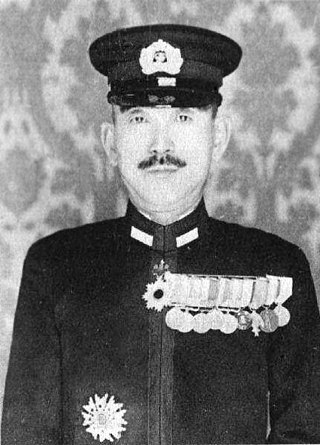
Raizō Tanaka was a rear admiral in the Imperial Japanese Navy (IJN) during most of World War II. A specialist in the heavy torpedoes that were carried by all the destroyers and cruisers of the IJN, Tanaka mainly commanded destroyer squadrons, with a cruiser or two attached, and he was the primary leader of the "Tokyo Express" reinforcement and resupply shipments during the long campaign for the island of Guadalcanal in the Solomon Islands of the South Pacific Ocean. From the Americans, Tanaka acquired the nickname of "Tenacious Tanaka" for his stalwart opposition.

Fubuki was the lead ship of twenty-four Fubuki-class destroyers, built for the Imperial Japanese Navy following World War I. When introduced into service, these ships were the most powerful destroyers in the world. They served as first-line destroyers through the 1930s, and remained formidable weapons systems well into the Pacific War. Fubuki was a veteran of many of the major battles of the first year of the war, and was sunk in Ironbottom Sound during the Battle of Cape Esperance in World War II.
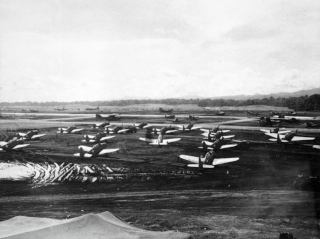
Cactus Air Force refers to the ensemble of Allied air power assigned to the island of Guadalcanal August 1942 until December 1942 during the early stages of the Guadalcanal Campaign, particularly those operating from Henderson Field. The term "Cactus" comes from the Allied code name for the island. In 1943, the Cactus Air Force was absorbed into AirSols, a joint command of Allied air units in the Solomon Islands.

The Solomon Islands campaign was a major campaign of the Pacific War of World War II. The campaign began with Japanese landings and occupation of several areas in the British Solomon Islands and Bougainville, in the Territory of New Guinea, during the first six months of 1942. The Japanese occupied these locations and began the construction of several naval and air bases with the goals of protecting the flank of the Japanese offensive in New Guinea, establishing a security barrier for the major Japanese base at Rabaul on New Britain, and providing bases for interdicting supply lines between the Allied powers of the United States and Australia and New Zealand.
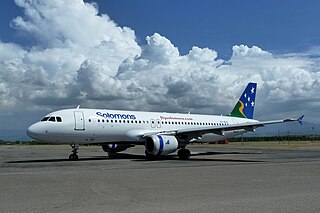
Honiara International Airport, formerly known as Henderson Field, is an airport in the province of Guadalcanal in the nation of Solomon Islands. It is the primary international airport in the country, the second being Munda Airport in Western Province, which serves as its alternate. It is located 8 kilometres from the capital, Honiara.

Lofton Russell Henderson was a United States Marine Corps aviator during World War II. He commanded Marine Scout Bombing Squadron 241 (VMSB-241) at the Battle of Midway and died while leading his squadron in an attack against Japanese aircraft carriers.
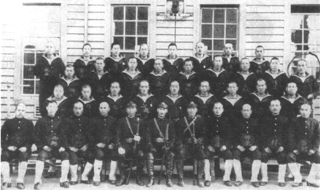
The invasion of Tulagi, on 3–4 May 1942, was part of Operation Mo, the Empire of Japan's strategy in the South Pacific and South West Pacific Area in 1942. The plan called for Imperial Japanese Navy troops to capture Tulagi and nearby islands in the British Solomon Islands Protectorate. The occupation of Tulagi by the Japanese was intended to cover the flank of and provide reconnaissance support for Japanese forces that were advancing on Port Moresby in New Guinea, provide greater defensive depth for the major Japanese base at Rabaul, and serve as a base for Japanese forces to threaten and interdict the supply and communication routes between the United States and Australia and New Zealand.

The Battle of the Tenaru, sometimes called the Battle of the Ilu River or the Battle of Alligator Creek, was a land battle between the Imperial Japanese Army and Allied ground forces that took place on 21 August 1942, on the island of Guadalcanal during the Pacific campaign of World War II. The battle was the first major Japanese land offensive during the Guadalcanal campaign.

The Battle of Edson's Ridge, also known as the Battle of the Bloody Ridge, Battle of Raiders Ridge, and Battle of the Ridge, was a land battle of the Pacific campaign of World War II between Imperial Japanese Army and Allied ground forces. It took place from 12–14 September 1942, on Guadalcanal in the Solomon Islands, and was the second of three separate major Japanese ground offensives during the Guadalcanal campaign.

The Battle for Henderson Field, also known as the Battle of Guadalcanal or Battle of Lunga Point by the Japanese, took place from 23 to 26 October 1942 on and around Guadalcanal in the Solomon Islands. The battle was a land, sea, and air battle of the Pacific campaign of World War II and was fought between the Imperial Japanese Army and Navy and Allied forces, mainly U.S. Marines and Army. The battle was the last of three major land offensives conducted by the Japanese during the Guadalcanal campaign.
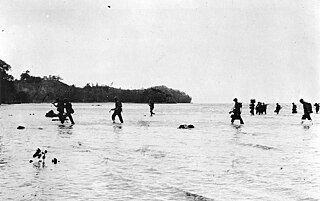
The Battle of Tulagi and Gavutu–Tanambogo was a land battle of the Pacific campaign of World War II, between the forces of the Imperial Japanese Navy and Allied ground forces. It took place from 7–9 August 1942 on the Solomon Islands, during the initial Allied landings in the Guadalcanal campaign.
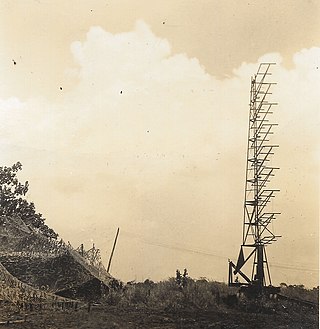
The Marine Corps Early Warning Detachment, Guadalcanal (1942–43) was a ground based early-warning radar detachment that provided long range detection and rudimentary fighter direction against Japanese air raids during the Battle of Guadalcanal. Initially deployed as part of the headquarters of Marine Aircraft Group 23, this detachment established an SCR-270 long range radar that allowed the Cactus Air Force to husband its critically short fighter assets during the early stages of the battle when control of the island was still very much in doubt. The detachment arrived on Guadalcanal on August 28, 1942, began operating in mid-September, and did not depart until early March 1943. Combat lessons learned from this detachment had a great deal of influence on the Marine Corps' development of its own organic, large scale air warning program which began in early 1943.
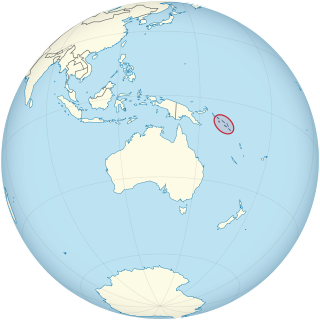
US Naval Base Solomons was a number of United States Navy bases in the Solomon Islands in the Pacific Ocean. Most were built by the US Navy Seabees, Naval Construction Battalions, during World War II as part of the Pacific War. In August 1942 the United States Armed Forces took the Guadalcanal in the Solomon, in the Battle of Guadalcanal. US Navy Seabees built a new base at Guadalcanal, Naval Base Guadalcanal and then on other islands in the Solomons.
